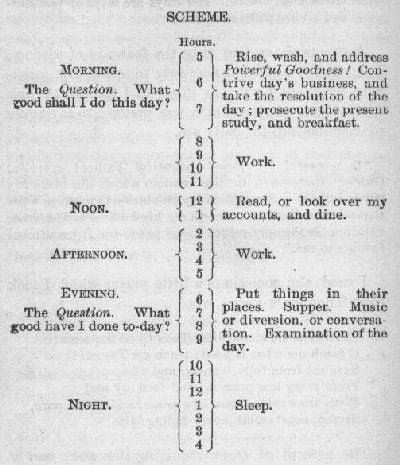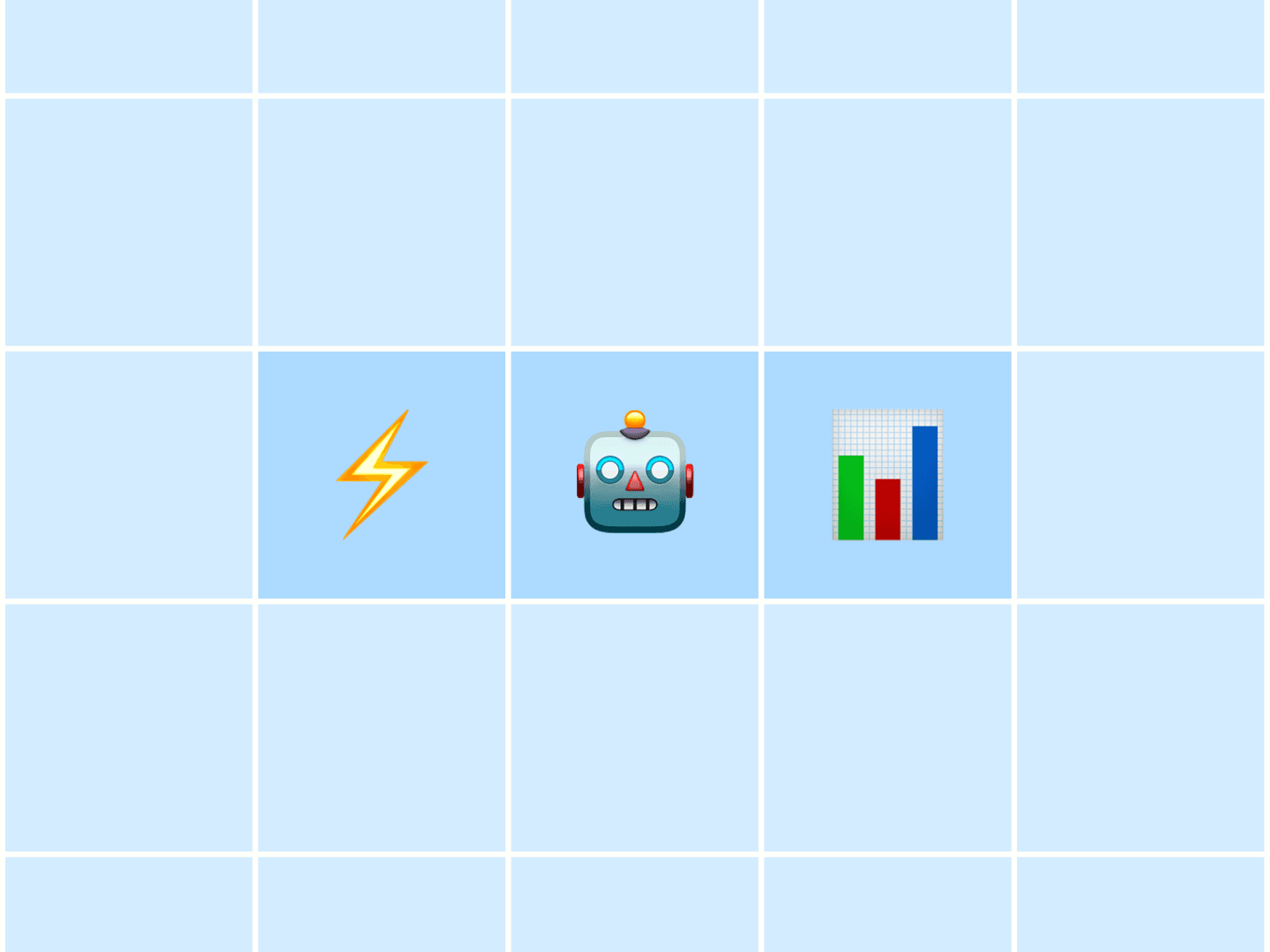Whether you’re a morning person or a night owl, we all start our day at some point. And we all seem to start it differently.
Some of us hop online to check social media, others dive in to email, still others eat breakfast, exercise, or pack lunches for the kids. There’re a million different ways a morning could go.
Which morning routine might be best?
While there’s probably not an ideal morning routine that fits everyone, we can learn a lot from the morning routines of successful people as well as from the research and inspiration behind starting a morning on the right foot.
I collected a wide range of opinions on how best to start a day, from the scientific to the successful. Here’s the best of what I found—maybe it’ll help you get a little more productivity, creativity, and enjoyment out of your morning.
Science says: Willpower is highest in the morning, so start strong
You’ve maybe heard the advice that your first work of the day should be something meaningful and significant, a task that might take a lot of focus, will, and determination to accomplish. The reason: We’re limited with our self-control.
That’s the idea purported by the strength model. Self-control draws from a common resource that gets depleted over time. You can think of self-control as a muscle—fatigue sets in after exertion.
Researchers at the University of Nottingham and the National Institute of Education in Singapore reviewed 83 studies on self-control to come to the following conclusion:
Results revealed a significant effect of ego depletion on self-control task performance. Significant effect sizes were found for ego depletion on effort, perceived difficulty, negative affect, subjective fatigue, and blood glucose levels.
For those scoring at home, that’s both a psychological and physiological effect on your ability to get work done.
The longer the day goes on, the more fatigue your self-control experiences, the more important it is to make those early morning hours count.
The easiest way to hack your morning: Tomorrow List
From research and meta-analyses to Mark Twain, the advice is the same: Get big work done early.
Twain’s advice stems from this famous quote of his:
Eat a live frog first thing in the morning, and nothing worse will happen to you the rest of the day.
We’ve co-opted Twain’s saying to mean, “Do your biggest tasks first.” When you start with a big item (a project/frog), the rest of your day looks pretty great by comparison.
The saying even inspired the title of a best-selling time-management book, Eat That Frog by Brian Tracy. Fast Company highlighted Tracy’s work in an article about morning rituals and asked Lifehacker founder Gina Trapani to explain how exactly one implements the frog strategy into a daily system.
Step one:
Choose your frog.
Once the frog is chosen, Trapani continues, write it down on a piece of paper that you’ll see when you first come into your office the next day. Then when your alarm goes off in the morning or when you arrive at work, bon appétit!
There are many examples of this specific method of frog-eating, a couple examples of which you’ll see below. The concept is something I like to call a Tomorrow List.
- At the end of your day, write down the tasks you need to complete tomorrow.
- Look at the list when you start the next day.
- End your day by creating another list for tomorrow.
And keep repeating.
Steve Jobs’ morning routine: One simple question
In a commencement address he gave at Stanford back in 2005, Steve Jobs revealed the motivational tactic that he used to start each and every day.
For the past 33 years, I have looked in the mirror every morning and asked myself: “If today were the last day of my life, would I want to do what I am about to do today?”
And whenever the answer has been “No” for too many days in a row, I know I need to change something.
Pretty powerful stuff. Would asking that question help keep your morning to-dos in perspective?
10 morning rituals of successful people
OK, we’ve talked about the science behind morning rituals, the frogs to eat first thing, and the inspiring questions to ask to get you started. Now it’s time for some specifics.
Here’s how some famous names in history, some entrepreneurs, founders, and executives do first thing in the morning.
Ron Friedman, founder and author
An inspiring morning reminder is one shared by founder and author Ron Friedman. It goes like this:
Ask yourself this question the moment you sit at your desk: The day is over and I am leaving the office with a tremendous sense of accomplishment. What have I achieved?
For many of us, checking email or listening to voice mail is practically automatic. In many ways, these are among the worst ways to start a day. Both activities hijack our focus and put us in a reactive mode, where other people’s priorities take center stage. They are the equivalent of entering a kitchen and looking for a spill to clean or a pot to scrub.
Kenneth Chenault, American Express CEO
The last thing Chenault does before leaving his office at night is to write down the top three things he wants to accomplish tomorrow. Then he’ll use that list to start his next day.
Anna Wintour, Vogue editor-in-chief
One of the more enthusiastic morning routines I found was Wintour’s daily ritual of playing tennis. Starts each day at 5:45 a.m. with an hour-long tennis match.
Margaret Thatcher, former UK prime minister
Thatcher was believed to be a short sleeper (a person who can get by on less sleep than usual), so her late-night political meetings never kept her from waking up at 5:00 a.m. the next morning to listen to “Farming Today,” a popular program on BBC Radio about food, farming, and the countryside.
Benjamin Franklin, a founding father of the United States
Franklin’s much-lauded to-do list (seen below) included some specific rules for how he started each morning. His three-hour block of morning routine stretched from 5:00 to 7:00 a.m. and included addressing “Powerful Goodness” and setting a plan for the rest of his day.
Every morning Franklin asked himself, “What good shall I do today?”

P.G. Wodehouse, author and humorist
When Wodehouse woke at 7:30 a.m., he’d head right to the back porch for his “daily dozen” calisthenics. Then he’d come inside and make breakfast (always toast, coffee cake, and tea) and read a “breakfast book,” some sort of entertaining mystery or adventure novel.
(Wodehouse’s writing routine was also quite neat. He’d start by sitting in an armchair, writing a few paragraphs in pencil before moving to the typewriter to write out the rest.)
William Styron, novelist
As evidence that our mornings do not all begin at the same time, look no further than William Styron. He slept until noon, and his “morning” routine involved staying in bed for another hour to think and read.
Eva Chen, editor-in-chief of Lucky magazine
First thing when she wakes up, Chen checks Twitter and her favorite websites. She’ll skip TV because she tends to get sucked in to shows like “reruns of the OC.” After checking the web and putting on makeup, Chen dresses herself from the shoes up.
Once she arrives at the office, her first order of business is a venti green tea.
David Karp, Tumblr founder
Karp saves all of his e-mail until he arrives at work at 9:30 or 10:00 a.m., after a 15-minute walk (or even faster Vespa ride) from home. “If something urgently needs my attention,” he said, “someone will call or text me.” Once at work, email is Karp’s first task. He’ll check his inbox, which contains only emails from Tumblr staff and from his girlfriend. Then he’ll sift through an “unsorted” folder of other emails, all the while making a list in a notebook of the things he needs to get done.
Craig Newmark, Craigslist founder
How does the Craigslist founder start his day? When the question was asked on Quora, Newmark answered: “Customer service.” Few founders have taken the path Newmark has; he considers himself a customer service rep at Craigslist. So while other executives might start their days with meetings or email, Newmark focuses on the customer.
6 tips to form a better morning routine
We’ve talked before on the blog about the daily routines of successful entrepreneurs, including six helpful tips that these successful morning routines had in common.
If you’re interested in starting a great morning routine of your own, here are some ideas.
- Eat a good breakfast (it can be fast and easy).
- Listen to your body clock. Do creative work when it feels best.
- Set an alarm to wake up and an alarm to go to sleep.
- Disengage: Zero notifications from apps and phones at night.
- Develop a morning routine that works on weekends, too.
- Track your habits to better understand yourself.
Over to you: What does your morning ritual look like?
Do you have anything in common with Benjamin Franklin, Steve Jobs, Margaret Thatcher, or others? What does your unique morning ritual entail?
Mine has evolved quite a bit over the past several months—and will likely keep evolving. It feels like I’ve settled into a pretty good rhythm with this schedule:
- Wake up at 5:30 a.m.
- Consult my Tomorrow List
- Head to the computer and start writing a blog post
- Shower/breakfast at 7:00 a.m.
- Back to writing
I’d love to hear about your routine, too. Feel free to share your morning schedule here in the comments.
Image credits: Jonathan Kos-Read, Theophilos
Try Buffer for free
190,000+ creators, small businesses, and marketers use Buffer to grow their audiences every month.



